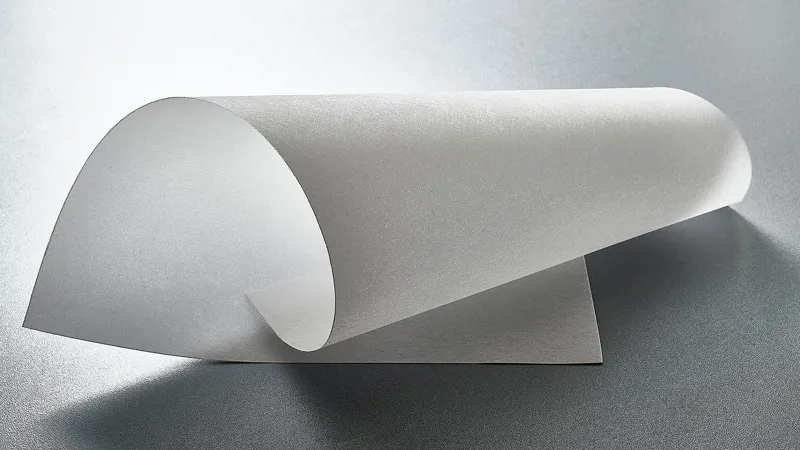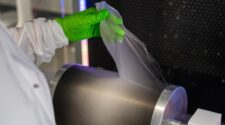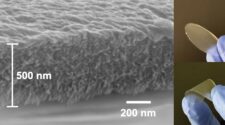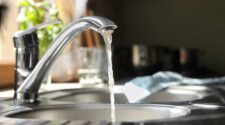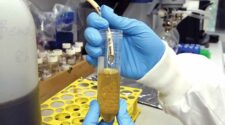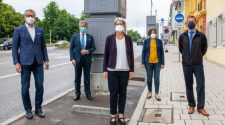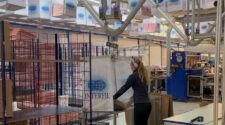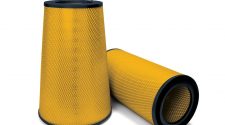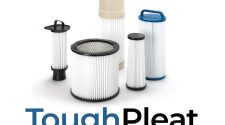In this new feature, IFN will highlight significant research from universities and institutions around the world. If you are a part of a project you would like to highlight, email csmith@inda.org. Please write “IFN Emerging Research Submission” in your subject line in order to apply. Please send a completed press release and/or summary of the research as you would want it to be printed, a link to the university online story (if applicable), and all high resolution photographs/charts/graphs, short researcher bio(s). All selections could be edited for length.
Vanderbilt University
Reimaging Kidney Dialysis with New Paradigm for Dialysis Membranes
A collaborative team led by Piran Kidambi, assistant professor of chemical and biomolecular engineering, William Fissell, associate professor of nephrology and hypertension at Vanderbilt University Medical Center, Shuvo Roy, professor of bioengineering at University of California, San Francisco, and Francesco Fornasiero, biosciences and biotechnology staff scientist at Lawrence Livermore National Lab, has developed a new type of filter for kidney dialysis machines that can clean the blood more efficiently and improve patient care.
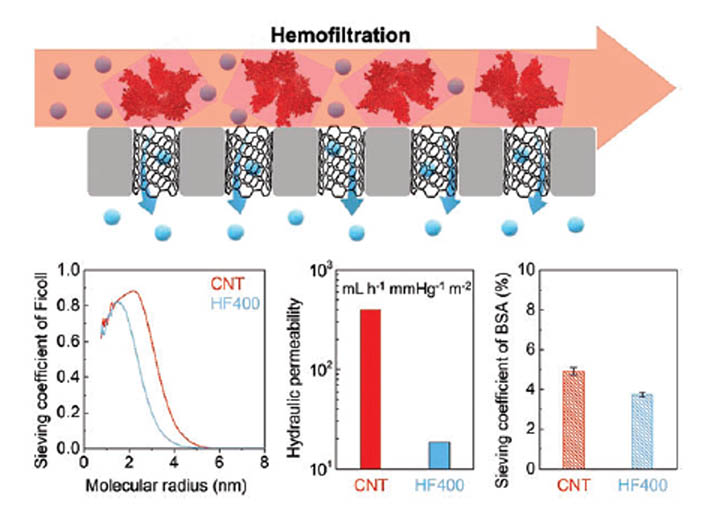
Chronic kidney disease, a condition where kidney damage results in poor blood filtration, affects approximately 697.5 million people – or 9 percent of the global population. Treatment includes hemofiltration, hemodialysis or kidney transplantation. Hemofiltration and hemodialysis support the kidneys by filtering toxins and waste products from blood.
The new filter uses carbon nanotubes – tiny tubes formed by a sheet of carbon atoms bonded in a hexagonal honeycomb mesh structure – that have very small, smooth channels. These channels make it easier to remove toxins and waste from the blood without letting important proteins escape, which can be a problem with traditional filters.
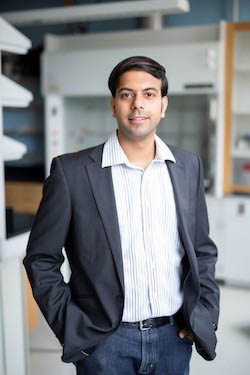
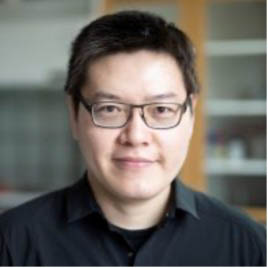
In the article “High-Performance Hemofiltration via Molecular Sieving and Ultra-Low Friction in Carbon Nanotube Capillary Membranes,” published in the journal Advanced Functional Materials on Aug. 27, 2023, Kidambi and his co-authors demonstrate that their dialysis membranes made up of carbon nanotubes and polymers create a new paradigm for dialysis.
“Our membranes outperform state-of-the-art dialysis membranes by more than an order of magnitude while simultaneously allowing for enhanced removal of middle molecules that could cause toxicity and other health complications,” Kidambi said. “We showed that precise control of carbon nanotube diameters not only allowed for enhanced and effective removal of middle molecules, but the straight channel geometry as well as slippery walls of the nanotubes allowed for significantly enhanced flow.”
Wafer-scale vertically aligned carbon nanotubes (CNT) integrated into a membrane platform comprising sub-5 nm channels/capillarie enable overcoming persistent challenges in hemofiltration/hemodialysis. Compared with conventional membranes, CNT membranes allow for greatly enhanced removal of middle molecules (≈15–60 kDa) while maintaining comparable albumin (≈66 kDa) retention and significantly higher hydraulic permeability (more than an order of magnitude when normalized to pore-area). (Cheng, Ferrell, et. al.)
The work also yielded fundamental insights on how biomolecules transport in nanoscale constrictions. Like an octopus that can contort itself to fit in the smallest spaces and then expand, Kidami and his co-authors discovered that biomolecules squeeze into the entrance of the nanotube in the membrane, travel through it and expand again on the other side. This knowledge can help researchers and engineers design membranes for biological separations beyond dialysis.
Using better membranes in dialysis is beneficial for patient care. Kidambi and his colleagues plan to assess long-term operational feasibility, blood compatibility and other questions about the filter to develop it for patient care. They aim to further this technology with advances the Kidambi lab has made in graphene.
“Our goal is to enable smaller kits for dialysis so they can go to patients, instead of them coming to the hospital and getting strapped into a dialysis machine three times a week for four hours,” said Peifu Cheng, a postdoctoral research associate in the Kidambi lab and the paper’s first author. “That would be a huge improvement in the quality of life of the patient. Our long-term goal is to move toward implantable devices.”
— © 2024 Vanderbilt University
The research was supported by faculty startup funds from Vanderbilt University and Kidambi’s NSF CAREER award. A portion of this work was performed at the Molecular Foundry, which was supported by the Offices of Science and of Basic Energy Sciences of the U.S. Department of Energy.
Syracuse University
Ian Hosein Awarded New Process Patent – Energy from Saltwater
Report by Kwami Maranga
The lack of access to clean drinking water impacts billions worldwide. With an estimated 46% of the global population affected, underdeveloped communities don’t have the means to utilize efficient technology for water purification. As the percentage of those affected grows, associate professor Ian Hosein was recently awarded a patent that shows promise in addressing global water security and revolutionizing sustainability. To Hosein, sustainability is more than just a solution to environmental issues – it’s a means of empowerment.
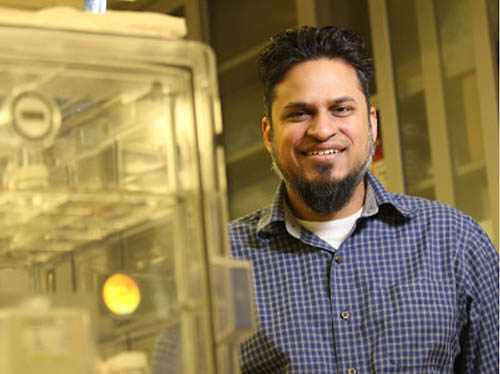
“There’s an enormous amount of energy out there at a time when the world needs it most,” Hosein said. “We’re taking energy from the sea, which everyone has access to, and providing a simple technology to be able to harness that energy.”
As an associate professor in biomedical and chemical engineering and a leader of a research group that develops sustainable technologies, Hosein is dedicated to clean energy efforts. Sparked by a student’s curiosity to investigate alternative energy sources, he began the journey to his patent by exploring the effectiveness of current filtration systems.
“We worked a lot with polymers and plastics, which were great for filtration down to the atomic scale. They’re also impermeable to salts and let certain things in and out,” Hosein said. “Since most filtrations are using plastics, former student Fuhao Chen G’19 discovered that if you have saltwater on one side of the plastic film, and no salt on the other, you’ve essentially created a battery. Saltwater has a lot of energy, so when you place it next to non-salty water, there’s diffusion.”
Taking this a step further, they discovered the potential of using other materials to regulate the high and low energy difference between salty and non-salty water and harness it as energy.
“If you put a barrier between salt water and non-salty water, you have all this stored energy on one side and low energy on the other. It’s like hydroelectricity in a dam and you can control the current or amount of electricity produced.”
The ability to control the amount of electricity produced is what distinguishes Hosein’s patent from other patents. While many filtration systems rely on a plastic film similar to Hosein’s device, they’re passive, meaning they can’t control the amount of electricity produced. Hosein’s patented technology is active, which means it can apply additional voltage on both sides to amplify its efficiency. Other filtration systems may have inconsistent voltage depending on how much salt is in the water.
“Our planet is 96% saltwater, and saltwater also doesn’t discriminate,” he said. “It’s accessible to everyone, and anyone can gain access to clean energy with this. This could change the world.”
With help from the University’s Office of Technology Transfer, they obtained a patent for the device, which Hosein intends to utilize to power small residentials and sealines. If his patented technology is scaled up, it may even be able to power sea transportation, which currently relies heavily on carbon-based fuels. With this renewable technology, Hosein also hopes to level the playing field of sustainability.
“Sustainable energy is very empowering,” he said. “With this tech, people can empower themselves to generate their own energy and have access to clean energy. They may not have access to oil and coal, but they do have seawater. With this device, we’re closer to a world where everyone has access to clean water and more renewable energy.”
— © 2024 Syracuse University News
The University of Texas at Austin
Injectable Water Filtration System Could Improve Access to Clean Drinking Water
Report by Nat Levy, Cockrell School of Engineering
More than two billion people, approximately a quarter of the world’s population, lack access to clean drinking water. A new, portable and affordable water filtration solution created by researchers at The University of Texas at Austin aims to change that.
The new system collects dirty water with a syringe and injects it into a hydrogel filter that weeds out nearly all tiny particles. It also offers significant advantages in cost, simplicity, effectiveness and sustainability compared with existing commercial options, giving users the ability to easily decontaminate water from nearby streams and rivers and make it drinkable.
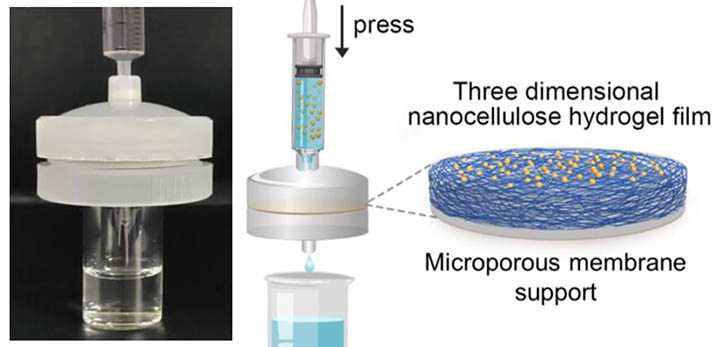
“The pressing concern of particle-polluted water, particularly in remote and underdeveloped regions where people frequently rely on contaminated water sources for consumption, demands
immediate attention and recognition,” said Guihua Yu, a professor of materials science in the Cockrell School of Engineer’s Walker Department of Mechanical Engineering and Texas Materials Institute. “Our system, with its high efficiency in removing diverse types of particles, offers an attractive yet practical solution in improving freshwater availability.”
Today’s options for portable water filtration of tiny particles mostly consist of filter paper and microporous membranes. According to the research, these devices filter out about 40% and 80% of particles larger than 10 nanometers, respectively. This new system catches close to 100% of these particles.
It is made of low-cost, sustainable, readily available materials. The main innovation is an intertwined web of nanocellulose fibers that catches particles while the newly cleaned water passes through.
All the user has to do is take the syringe to the nearest water source, pull out the water and inject it through the filter. The system takes care of the rest, producing clean, drinkable water.
The filter system has been tested with several types of water sources, including muddy water, river water and water contaminated with microplastics. The hydrogel films are biodegradable and can be used up to 30 times before replacing.
The research team has tested the technology using syringes as large as 1.5 liters, about 40% of an individual’s daily drinking water needs, and plan to continue developing the technology to use it at larger scales to tackle global drinking water needs.
“The reality is a large percentage of the world’s population lacks access to safe drinking water, even in places where fresh water sources are available,” said Chuxin Lei, lead author and a graduate student working in Yu’s lab. “There is an urgent need for simple, universal and efficient materials and devices for purifying particle-contaminated water, which should be able to help people around the world obtain clean water.”
— © The University of Texas at Austin 2024
Team members on the project also include colla-borators from Northeast Forestry University, Shanghai Tech University and Tsinghua University in China.
CU Boulder
New Membrane Filtering Technology Could Help Address Water Scarcity
Report by Josh Rhoten
Researchers have developed a new membrane water filtration system based around air bubbles that can help address water scarcity issues around the world.
Membrane filters generally use pressure to force water through a sieve to separate out unwanted particles and contaminants. The new membrane system is unique in that it uses a tiny layer of air bubbles to distill the water rather than sieve it. This change makes the system more permeable and better at removing unwanted impurities than the common reverse osmosis systems working today.
The new technology is described in a recently published journal article in Science Advances, and the work on campus was led by Civil, Environmental and Architectural Engineering Assistant Professor Anthony Straub with Ph.D. student Duong Nguyen contributing as first author.
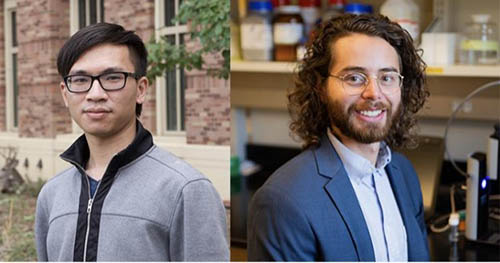
“These can be utilized to purify water to a very high degree when it comes to desalination of seawater and in wastewater reuse efforts,” Straub said. “We also have ongoing work with NASA to use these membranes to recycle water during space exploration and research missions.”
Current state-of-the-art engineered membranes are all limited in their use by a universal trade-off where those with high water permeability also struggle to remove salt. That is, membranes that can process a high volume of water are also inherently limited in their ability to clean that water.
“They are also vulnerable to degradation from chemicals used in water treatment,” Straub said. “So, there are a lot of advantages to pursuing this technology and possibly integrating it into existing treatment process.”
Nguyen is originally from the coastal area near Hanoi in Vietnam where maintaining clean water supplies is still a big challenge because of contamination from industrial activities. He has experienced how a lack of efficient water treatment technologies and poor water infrastructure negatively impacted people in
the area.
“A passion for both securing water resources and improving water quality for my community – and globally – is what led me to pursue a degree and research into water purification membranes at CU Boulder,” he said. “The university has a strong reputation in this field with many faculty that are the top researchers in water treatment and reuse, including my advisor professor Straub. I have learned a lot from him, both in conducting research and in terms of professional development during my Ph.D. training here.”
Straub said the university has a strong history in water reuse research – primarily through the Membrane Science Engineering and Technology Center on campus and ongoing activity in the Environmental Engineering Program. He added that the team used the Colorado Shared Instrumentation in Nanofabrication and Characterization facility on campus to complete the highly interdisciplinary work.
“We have been trying to create this type of membrane for years,” he said. “We will now look at ways to scale it up and potentially integrate it into existing approaches to water treatment.”
— © University of Colorado


